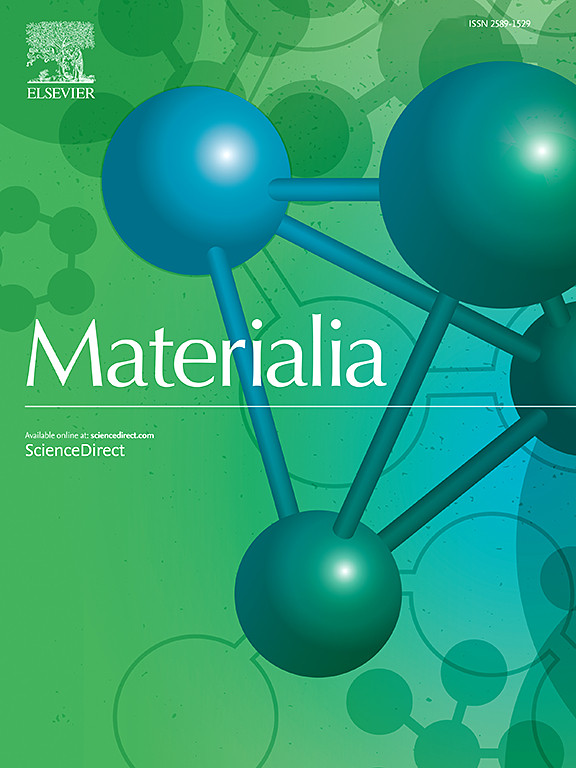用统计模型离散邻域模拟钢在热处理过程中的晶粒生长
IF 3
Q2 MATERIALS SCIENCE, MULTIDISCIPLINARY
引用次数: 0
摘要
在经典平均场模型的基础上,提出了一种新的晶粒生长模型,使其包含了晶粒的局部邻域。该方法的理论基础是在晶界能各向同性的情况下,三重结的晶界平衡角估计为120°,考虑二维。基于这一事实和单个晶粒的尺寸比较,开发了一种算法,该算法为所有晶粒分配离散的邻域关系,从而产生人工微观结构。为了验证,研究了热处理后不同状态下的CMn钢样品,并使用深度学习方法从蚀刻样品中提取晶界,具有良好的统计性和可靠性。介绍并比较了人工微结构和真实微结构的性能和统计特征。结果表明,简单的拓扑方法,如晶粒邻接数与相对晶粒尺寸之间的线性关系,仅在第一近似下是有效的,但在细节上是无效的。所提出的模型能够类似于拓扑模型中真实微观结构的这些小偏差。并将人工组织的晶粒长大行为与实际晶粒长大实验进行了比较。对比表明,通过实现晶粒的离散邻域,似乎在一定程度上覆盖了晶粒异常长大等行为,而无需像其他模型那样进行额外处理。本文章由计算机程序翻译,如有差异,请以英文原文为准。
Grain growth simulation of steels during heat treatment with statistically modeled discrete neighborhood
A new grain growth model is proposed that extends classical mean-field models to include the local neighborhood of grains. The theoretical basis of the approach is the equilibrium angle of grain boundaries at triple junctions, which is estimated to be 120°considering 2 dimensions, in the case of isotropic grain boundary energy. Based on this fact and a size comparison of individual grains, an algorithm is developed that assigns a discrete neighborhood relationship to all grains, resulting in the generation of an artificial microstructure. For validation, samples of a CMn steel were examined in different states after heat treatments and the microstructure was characterized using deep learning approaches to extract grain boundaries from etched samples with excellent statistics and reliability. The properties and statistical characteristics of the artificial and real microstructures are presented and compared. It is shown that simple topological approaches, such as the linear relationship between the number of grain neighbors and the relative grain size, are good only in a first approximation, but collapse in detail. The proposed model is able to resemble these small deviations of a real microstructure from topological models. Furthermore, the grain growth behavior of such an artificial microstructure is compared with real grain growth experiments. The comparison shows that by implementing the discrete neighborhood of grains, behaviors such as abnormal grain growth seem to be covered to a certain extent without additional treatment as required in other models.
求助全文
通过发布文献求助,成功后即可免费获取论文全文。
去求助
来源期刊

Materialia
MATERIALS SCIENCE, MULTIDISCIPLINARY-
CiteScore
6.40
自引率
2.90%
发文量
345
审稿时长
36 days
期刊介绍:
Materialia is a multidisciplinary journal of materials science and engineering that publishes original peer-reviewed research articles. Articles in Materialia advance the understanding of the relationship between processing, structure, property, and function of materials.
Materialia publishes full-length research articles, review articles, and letters (short communications). In addition to receiving direct submissions, Materialia also accepts transfers from Acta Materialia, Inc. partner journals. Materialia offers authors the choice to publish on an open access model (with author fee), or on a subscription model (with no author fee).
 求助内容:
求助内容: 应助结果提醒方式:
应助结果提醒方式:


